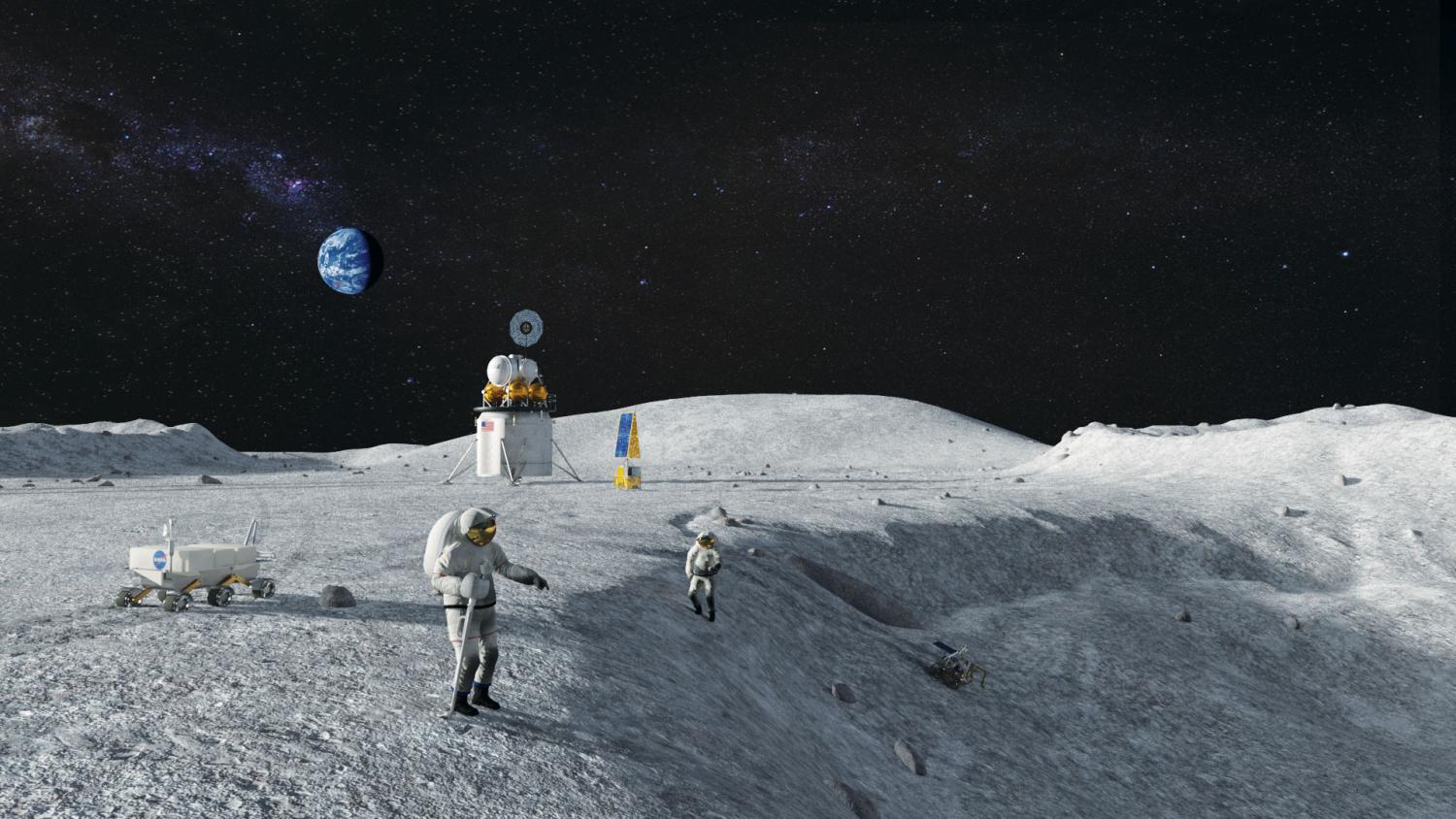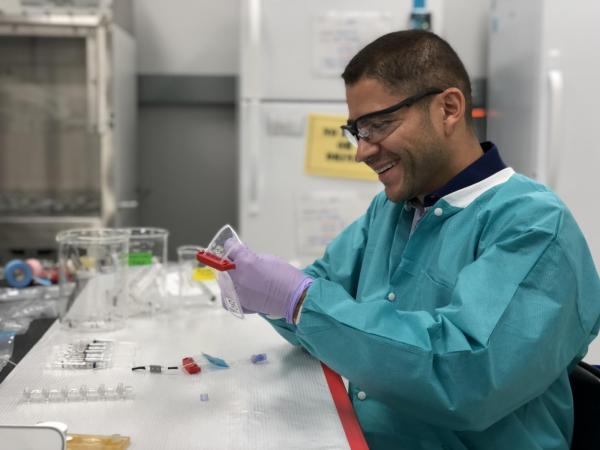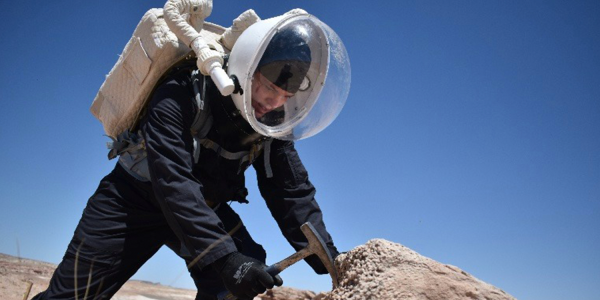
Getting humans back to the moon is one thing. Jack Burns and other CU scientists are asking, "How can we stay?"
On Dec. 13, 1972, Apollo 17 astronaut Eugene Cernan stepped off the surface of the moon and onto a ladder leading up the Challenger lunar module.
“We leave as we came,” he’d proclaimed a moment earlier, “and, God willing, as we shall return, with peace and hope for all mankind.”
But nearly 47 years later, we still haven’t: No human from any country has been back to the moon.
Now, as the United States prepares to celebrate the 50th anniversary, on July 20, of Neil Armstrong’s first lunar step, the nation is again getting serious about going back. In April, Vice President Mike Pence vowed NASA would return astronauts to the moon by 2024.
The space agency is already testing the Orion spacecraft, a capsule designed by Lockheed Martin that is expected to deliver astronauts there. Plans are also underway for an orbiting space station called the Lunar Gateway, which could serve as a base of operations for astronauts shuttling to and from the lunar surface.
CU Boulder’s Jack Burns, who served on the Trump administration’s NASA transition team and was present for Pence’s pledge, has been waiting a long time for this moment — not for the sake of adventure or geopolitics, but for science. He envisions humans living and working on the moon, using it as a platform for seeing the cosmos’ origins.
“When I hear people say ‘been there, done that for science on the moon, I tell them ‘You are nuts,’” said Burns, a professor of astrophysical and planetary sciences who also directs the NASA-funded Network for Exploration and Space Science at CU.
“When it comes to the moon, we have only scraped the thinnest surface of what is possible.”
Burns and other CU researchers are already working to meet the 2024 deadline, developing new technologies that could help humans explore the moon in ways Cernan, who died in 2017, could only have imagined.

Photo courtesy of NASA.
New Territory

Photo courtesy of NASA.
As a young astrophysicist, Burns didn’t think much about the moon. He was more interested in detecting the faint fingerprints of the universe’s first stars.
But in the mid-1980s, a colleague told him something new about the moon’s far side: Because it always faces away from Earth, it’s shielded from all of the noise of human civilization, including radio waves. And that made it the only territory within billions of miles where scientists could conceivably detect the signals Burns was after.
“On the moon, we can do these observations of the early universe that aren’t accessible any other way,” he said.
From that point on, Burns was hooked on the idea of getting people back there.
You can see early fruit of his current efforts in a small office at Folsom Field. There, a knee-high robot nudges forward on its wheels, then lowers its claw to drop an object into a funnel-like base.
Nicknamed “Armstrong,” this robot, built from off-the-shelf parts, wouldn’t last a minute in space’s harsh environment. But it helps Burns and colleagues explore a big question: How could humans use robots to colonize the moon?
Specifically, could astronauts living on the Lunar Gateway use remotely controlled robots to set up scientific instruments and moon bases?
“Obviously, it would be way more complicated in a real mission,” said Benjamin Mellinkoff (Aero’18), a graduate student in Burns’ lab leading the Armstrong experiments. “But for what we’re trying to identify, this is a good first cut.”
These experiments wouldn’t put humans on the moon by 2024, but they serve longer-term aims: Burns and colleagues want people to live and work there for months or years on end — not simply land, look around and leave.
Humans are always wondering what’s beyond the horizon.
To make that happen, space agencies and companies need to build permanent infrastructure, said CU computer scientist Daniel Szafir, Burns’ collaborator on the robot project. That’s where robots like Armstrong come in. Sophisticated versions could serve as mobile scientific labs, like NASA’s Mars Curiosity rover.
“I think it’s our destiny as a species to expand out into the universe,” said Szafir, of the engineering college’s ATLAS Institute. “But even if you’re going to do that, it will still be important to send robots first to prep the way, to build the habitats, to do some exploration.”
Burns hopes fleets of robots will eventually lay out miles and miles of radio antennae on the moon for detecting his long-sought signals from the first stars.
“No one has ever tried to assemble anything on the surface of another planet,” he said. “This is new territory.”
For Burns, the moon of a decade or two from now will be a busy place: Home to scientists probing both distant stars and the geology under their feet, and also to companies mining moon rocks for rare minerals and water.
The burgeoning moon economy would provide a practice round for an even more ambitious goal, he said — sending people to Mars, perhaps as soon as the 2030s.
Squishy Humans

Luis Zea (PhDAero'15) works in his lab, where him and his team study how radiation in space affects human DNA. Photo courtesy of CU Boulder.
There are other variables to consider, of course, including the toll long-term space travel could take on the human body.
With enough time and money, engineers can figure out how to build space shuttles and moon bases, said Allison Anderson, a CU assistant professor of aerospace engineering, but “the only thing you can’t reengineer is the soft squishy person on the inside.”
Anderson and colleagues in CU’s bioastronautics program are exploring these fleshy concerns. Their work ranges from trying to understand how human bones change in the absence of gravity and how to slow down that loss to designing the next generation of spacesuits.
One of the program’s experiments already has a ticket for orbit. NASA has said it will send an Orion spacecraft for a spin around the moon as soon as 2020. The capsule won’t host human passengers, but it will carry other life forms: Yeast cells cultured by CU’s Luis Zea (PhDAero’15) and team. Studying how radiation in space affects the yeast cells could indicate how it would affect human DNA.
“Orion is going to go to the moon, orbit, come back, and then we’re going to look at which of our yeast colonies survived,” said Zea, an assistant research professor in aerospace engineering.
Like Burns, Zea has been admiring the moon for a long time. He grew up in Guatemala and, as a young man, did everything he could to find work in a country with a space program. He’s since worked in three: The U.S., Germany and Brazil.
“Humans are always wondering what’s beyond the horizon,” Zea said.
By the time robots are laying antennae on the far side of the moon, a decade from now or so, Burns will be in his mid-70s. He’ll never see the results in person. But it’ll be enough for him to see other scientists fulfill Cernan’s 1972 promise.
“I’ll continue to work on moon science until I drop,” he said.
In our print edition, this story appears under the title "Lunar for the Long Term." Comment on this story? Email editor@colorado.edu.
Top photo by Glenn Asakawa.





